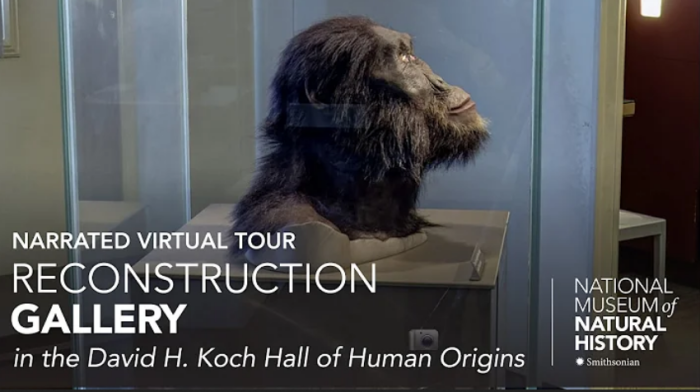Intelligent Design proponent says DC museum wants to ‘convince visitors there’s nothing special’ about humans

A Christian scientist says one of America’s most prestigious museums is promoting scientific misinformation about the history of mankind.
In a July op-ed for the New York Post, attorney and geologist Casey Luskin called out the Smithsonian’s National Museum of Natural History in Washington, D.C., for its depiction of an ape-like species as “early humans” in an effort to “convince visitors that there’s nothing special about us as human beings.”
The exhibit in the David H. Koch Hall of Human Origins claims there is “only about a 1.2% genetic difference between modern humans and chimpanzees” and features large images of a human and apes with the caption, “You and chimpanzees [are] 98.8% genetically similar.”
But Luskin, who holds a Ph.D. in geology and is a fellow of the Discovery Institute, says the exhibit’s numbers are “inaccurate” in light of a study published in the journal Nature in April, which reported significantly higher genetic differences between humans and apes than previously claimed.
During an Aug. 11 episode of the Discovery Institute podcast “ID The Future” with host Andrew McDiarmid, Luskin explained the Nature study’s findings, detailing how single nucleotide variations and alignment issues due to structural differences sum to a 15% genetic difference, far greater than the 1-2% commonly cited.
“This argument for human evolution based upon the claim that we are only 1% genetically different, it’s wrong,” he said. “We are far more than 1% genetically different.” Noting that scientists have long used the 1% number as a key argument for evolution, Luskin said the gap between apes and humans is far wider — and likely due to a common Creator rather than a common ancestor.
“The percent genetic similarity between humans and chimps really doesn’t tell you anything about whether we share a common ancestor because those genetic similarities … could also be the result of common design,” said Luskin.
Luskin also disputes the museum’s portrayal of fossils like Sahelanthropus tchadensis and Australopithecus as early humans that walked upright, noting scientific controversies and evidence suggesting ape-like traits. “They present the Australopithecines as quote ‘early humans’ … even though this is not even in the genus Homo,” he said. “They claim they walked upright on the ground, you know, much like we do.”
Instead, argued Luskin, evidence of ape-like knuckle-walking and tree-climbing adaptations suggests the creature was far more like an ape than initially depicted.
“Everything about her skeleton from fingertips to toes suggests several traits that would be very suitable for climbing in trees,” he added.
Luskin noted that the Smithsonian’s inaccuracies fall on the centennial of the 1925 Scopes Trial — a case about the prohibition of teaching human evolution in public schools that led to the teaching of Darwin’s theory — arguing that today’s evolutionists are obscuring accurate scientific data in what he described as a “Scopes in reverse” scenario. “How ironic that 100 years later, the nation’s premier science museum is obscuring scientifically objective and accurate data on the very same subject,” he said.
The Christian Post reached out to the Smithsonian for comment on Tuesday. This article will be updated if a response is received.
While often pitted against Darwinian evolution, the Intelligent Design theory has gained growing attention from mainstream scientists and has produced nearly 200 peer-reviewed scientific publications as of May 2024, according to the Discovery Institute.














